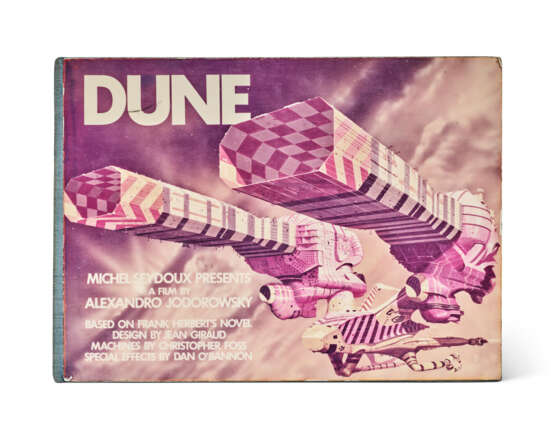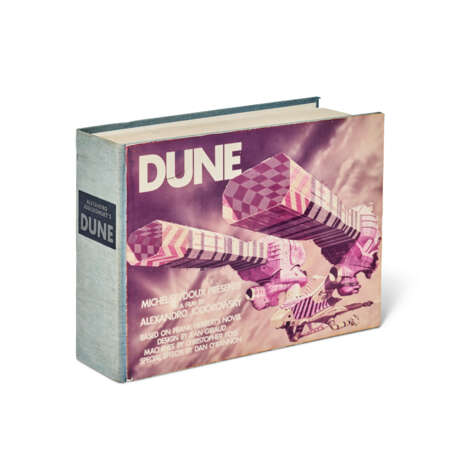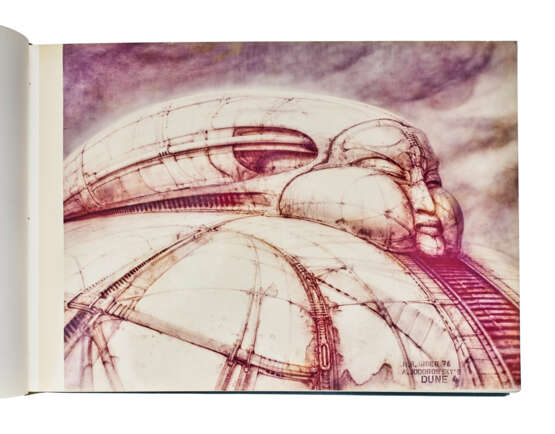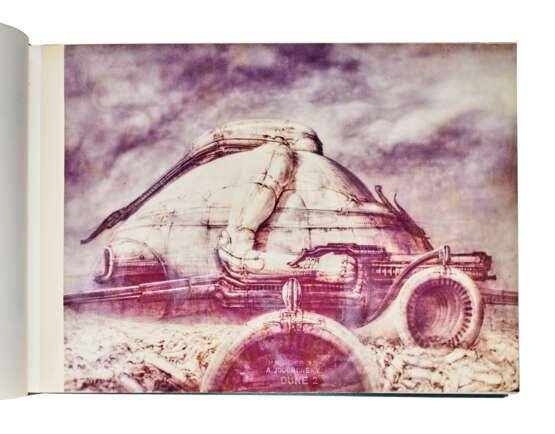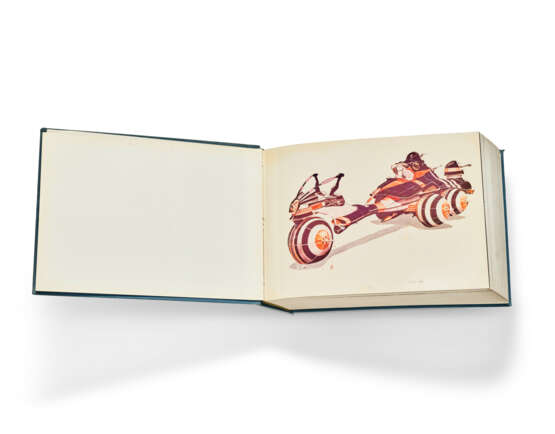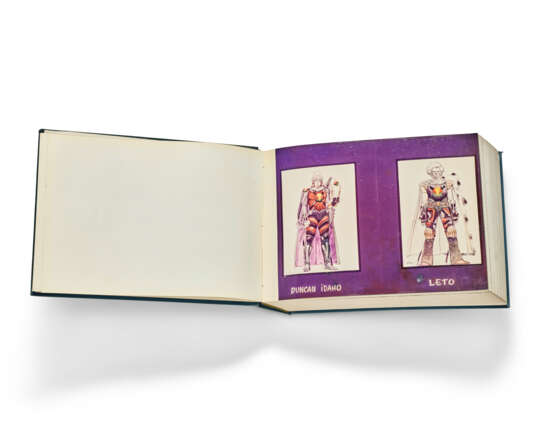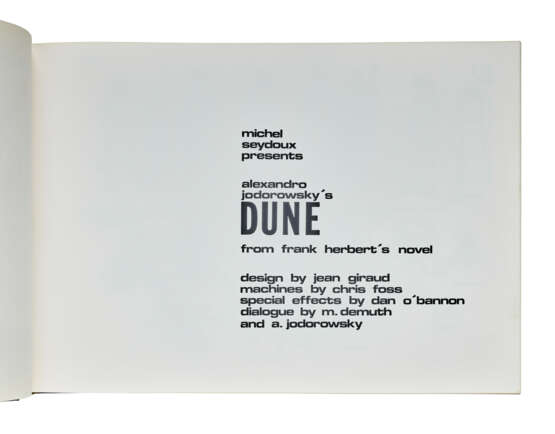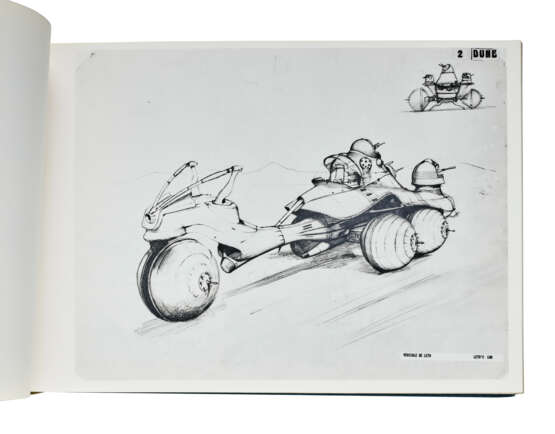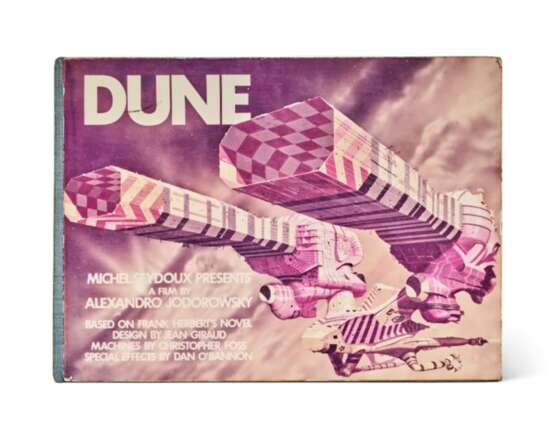ID 1353338
Lot 10 | The Dune Bible
Valeur estimée
£ 250 000 – 350 000
The Dune Bible: an extraordinary artefact from Jodorowsky's epic Dune project, being the storyboard for the ‘greatest movie that was never made’.
Alejandro Jodorowsky’s adaptation of Dune promised to be one of the most remarkable science-fiction films ever produced, but has instead become one of the most famous doomed projects in movie history. Originally published in 1965 in the United States, Frank Herbert’s Dune inspired several sequels and became the best-selling science fiction book ever. A film adaptation appeared to be a logical development – the rights were acquired in 1974, and Franco-Chilean director Alejandro Jodorowsky started working on the project. To help him in his daunting task - a film which would be between ten and fifteen hours long - he assembled some of the most talented artists of his time.
Pre-production work was done by Jean Giraud, also known as Moebius, who had co-founded the seminal comics publication Métal Hurlant, and was one of the most talented and important comics artists of his generation; Chris Foss, a British illustrator who had illustrated a huge number of covers for pocket editions, including books by Isaac Asimov and Edmund Cooper; and Hans Ruedi Giger, a Swiss artist well-known for his airbrush work. This trio led most of the preliminary work and were in charge of the artistic direction of the whole project – designing the characters, costumes, vehicles and environments.
Progressive rock bands Magma and Pink Floyd were approached by Jodorowsky and agreed to write and play on parts of the original soundtrack. The movie was to star Salvador Dalí, Mick Jagger, Orson Welles, David Carradine and Alain Delon.
It goes without saying that a project of this scale needed a colossal budget to come to life. Together with producer Michel Seydoux, Jodorowsky flew to the United States, to try and gather the 5 million dollars needed to kickstart the actual production. To spark the interest of the Hollywood decision-makers, they brought several copies of a thick, oblong volume. This book gathers reproductions of drawings among the thousands made by Moebius, Foss and Giger, including a near-complete story board of the movie, with dialogues in French and English.
Despite their passion and enthusiasm, they did not manage to convince the American studios. The financial well finally dried up, forcing them to cancel the whole project. But all was not in vain. According to Jodorowsky, despite its cancellation, the whole ‘project proved to the Americans that it was possible to make a larger-than-life science fiction movie, outside of the scientific rigor of 2001: A Space Odyssey (1968)’. Its influence is clear as day in most of the big space operas and science fiction movies of the 1970s, including Star Wars by George Lucas (1977), and Alien by Ridley Scott (1979), with the eponymous creature designed by Giger.
This evident influence shows that despite their refusal to fund the movie, studios deeply studied the storyboard brought to them by Jodorowsky and Seydoux. As a working document and a promotional tool, there are probably fewer than ten copies which have survived.
Less than a decade later, in 1984, David Lynch released his own controversial Dune. After the release of the first and second parts of his own vision (2021), Denis Villeneuve became the third director to adapt Herbert’s seminal novel. Despite its abrupt and bittersweet conclusion, the pioneering work of Jodorowsky and all the artists involved is one of the most fascinating projects in movie history, and one of the cornerstones of science fiction and pop culture.
Oblong octavo (210 x 295mm). 11 colour plates of photographic reproductions, after drawings by Christopher Foss, Jean Giraud-Moebius and H.R. Giger (a few small stains), title-page, 268 black and white plates of photographic reproductions, mostly the storyboard for the movie, with dialogue in French and English, and some studies for characters, environments and vehicles (first two colour plates loose from stitching, a few plates with minor yellow stains, heavier to 263rd plate), 1 colophon page. Original blue cloth binding with, pasted on the upper board, a photographic reproduction of the proposed movie poster after an original work by Christopher Foss, printed title label on the spine, remains of a snap button clasp, this copy numbered 4 on the rear pastedown (light wear, minor tear and creasing to front endpaper, some splitting to rear hinge).
| Lieu d'origine: | France |
|---|---|
| Catégorie maison de vente aux enchères: | Livres imprimés |
| Lieu d'origine: | France |
|---|---|
| Catégorie maison de vente aux enchères: | Livres imprimés |
| Adresse de l'enchère |
CHRISTIE'S 8 King Street, St. James's SW1Y 6QT London Royaume-Uni | |
|---|---|---|
| Aperçu |
| |
| Téléphone | +44 (0)20 7839 9060 | |
| Commission | see on Website | |
| Conditions d'utilisation | Conditions d'utilisation |
